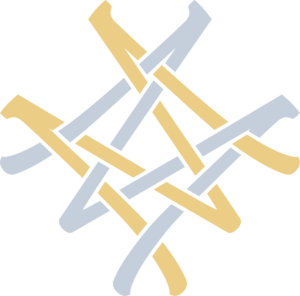By the summer of 1868, N.N. Miklouho-Maclay finished his studies at the medical faculty of the University of Jena. In those years, in Germany, graduate students of medical faculties had to pass state exams to obtain a doctor’s degree, but the future world-famous traveler decided not to. He was not going to be a practicing doctor, and medical knowledge could be useful in his future expeditions even without a diploma.
Continuing to assist the outstanding zoologist-Darwinist Ernst Haeckel, Nikolay Nikolaevich delved into the study of two major topics — the systematics of sponges and the evolution of the nervous system of animals, from the ancient fish to mammals.
Then the scientist decided to continue studying marine fauna in more comfortable conditions — in Messina, the Sicilian harbor, where due to the cholera epidemic he was unable to work together with Haeckel in 1866. The initiator of this trip was one of Haeckel’s students, the zoologist-Darwinist Anton Dorn. In mid-October, A. Dorn arrived in Messina and rented two large rooms in an ancient palace for himself and N.N. Miklouho-Maclay. The zoologists arranged a kind of laboratory in one of the rooms and began intensive work. Dorn engaged in his favorite crustaceans, and Miklouho-Maclay conducted research in two previously chosen subjects – morphology and systematics of sponges and comparative anatomy of the brain of fish. In Messina, Nikolay dissected and examined the brain of a chimera — a cartilaginous fish belonging, like a shark, to the clade Selachii. He reported his thoughts on the structure of chimera’s brain in a letter to the guru of comparative anatomy Karl Gegenbaur. The famous anatomist was so interested in these observations that he put them in the form of a brief report and it was published in the Jena “Journal of Natural Science, Biology and Medicine”. So the young scientist had another scientific publication.
However, there was little material for research in Messina, so N.N. Miklouho-Maclay turned his attention to the Red Sea. The marine fauna of the Red Sea – sponges in particular – remained very poorly studied at the time, and the young scientist set out on one urgent “scientific excursion” to the Red Sea to study its fauna before it was exposed to the Mediterranean fauna. However, it was not only sponges and other inferior marine animals that drew Nicholay to the shores of the Red Sea; another motivation for the voyage was a passion for dangerous ventures.
On 12 March 1869, Nikolay Nikolaevich left Messina on a steamer for the Egyptian port of Alexandria, from where he left for the capital of Egypt and stayed there for several days, after which he moved from Cairo to the city of Suez, located near the outlet to the Red Sea. “The temperature at midday is sometimes horrible <…> For some days there was khamsin (something like sirocco); this wind is very unpleasant, you can’t see anything at 10 paces because of the dust, you get tired, headache <…> the constant tension of unused eyes makes you feel strange, thoughts disappear from your head, you feel very tired and don’t want to think about anything <…>. Some days ago, I felt a slight fever, the third day and today too – the fun begins!” – the young scientist wrote to his friend A. Dorn. So, Nikolay Nikolaevich fell ill with malaria, which became the researcher’s companion for the rest of his life.
Miklouho-Maclay arrived in Jeddah on an Egyptian steamship, where he stayed for 18 days. Another feature of Miklouho-Maclay became apparent, which developed in his further expeditions, – in difficult conditions to quickly get acquainted and win the sympathy of “good people”, who, as he wrote to his sister, “are ready and consider it an honor to help a scientist”. A wealthy French merchant invited a somewhat strange young European in Arab attire, who was ready to risk his life and health for the sake of studying some sea creatures, to settle in his house.
In the mornings the young scholar would hire a sailboat with a boatman and two divers, usually engaged in collecting pearl shells, and set out for the coral reefs that lay parallel to the shore about two or three kilometers from the harbor.
From Jeddah, Miklouho-Maclay set out for the other two “stations” he had planned, Massawa and Suakin, visiting several islands along the way. The working conditions there were even more difficult than in Jeddah. In Suakin, the scientist enjoyed the hospitality of the governor, a very kind Egyptian, but more often he had to sleep in shabby huts or outdoors. However, it was in Suakin and Massawa where Miklouho-Maclay was lucky to discover, with the help of divers, several interesting species of marine sponges within a few days.
As already mentioned, Miklouho-Maclay conceived this trip mainly to study the Red Sea fauna and the sponges on the eve of the junction between the Red and Mediterranean Seas. Extreme conditions negatively affected the duration and effectiveness of the work. However, the traveler still managed to gather an interesting collection of Demosponges, keratose and calcareous sponges, which to this day are carefully preserved in the Zoological Museum of the Zoological Institute of the Russian Academy of Sciences in St. Petersburg. Miklouho-Maclay believed that he managed to discover nine new species of sponges during this expedition, but the descriptions he left are so brief that they can hardly be considered exhaustive. Modern sponge scientists are unable to establish which species of the Red Sea sponges were actually first described by Miklouho-Maclay. However, Nikolay was not only engaged in the study of sponges in the Red Sea. The young scientist, educated in biomedicine and specializing in zoology and comparative anatomy, demonstrated an unusually wide scientific outlook, managing, despite the difficulties and the short duration of the trip, to make interesting observations of physical, geographical and cultural character.
Miklouho-Maclay did not limit himself to just recording the results of these observations. A maximalist by nature, prone in those years to extensive generalizations, he also tried to uncover the causes of the economic and cultural underdevelopment of the local population. It was explained, in his opinion, by unfavorable climatic conditions (an exaggeration of the role of the geographical factor was widespread in the science of that time).
The trip to the Red Sea was an important milestone in the biography of Miklouho-Maclay. Here, in particular, some characteristic features of the future outstanding traveler’s activity appeared for the first time: inclination to work alone, preference for stationary methods of research. Thus began the process of Miklouho-Maclay’s transformation into a universal naturalist, who focused in his research on humans and manifestations of their cultures within the geographical environment.



